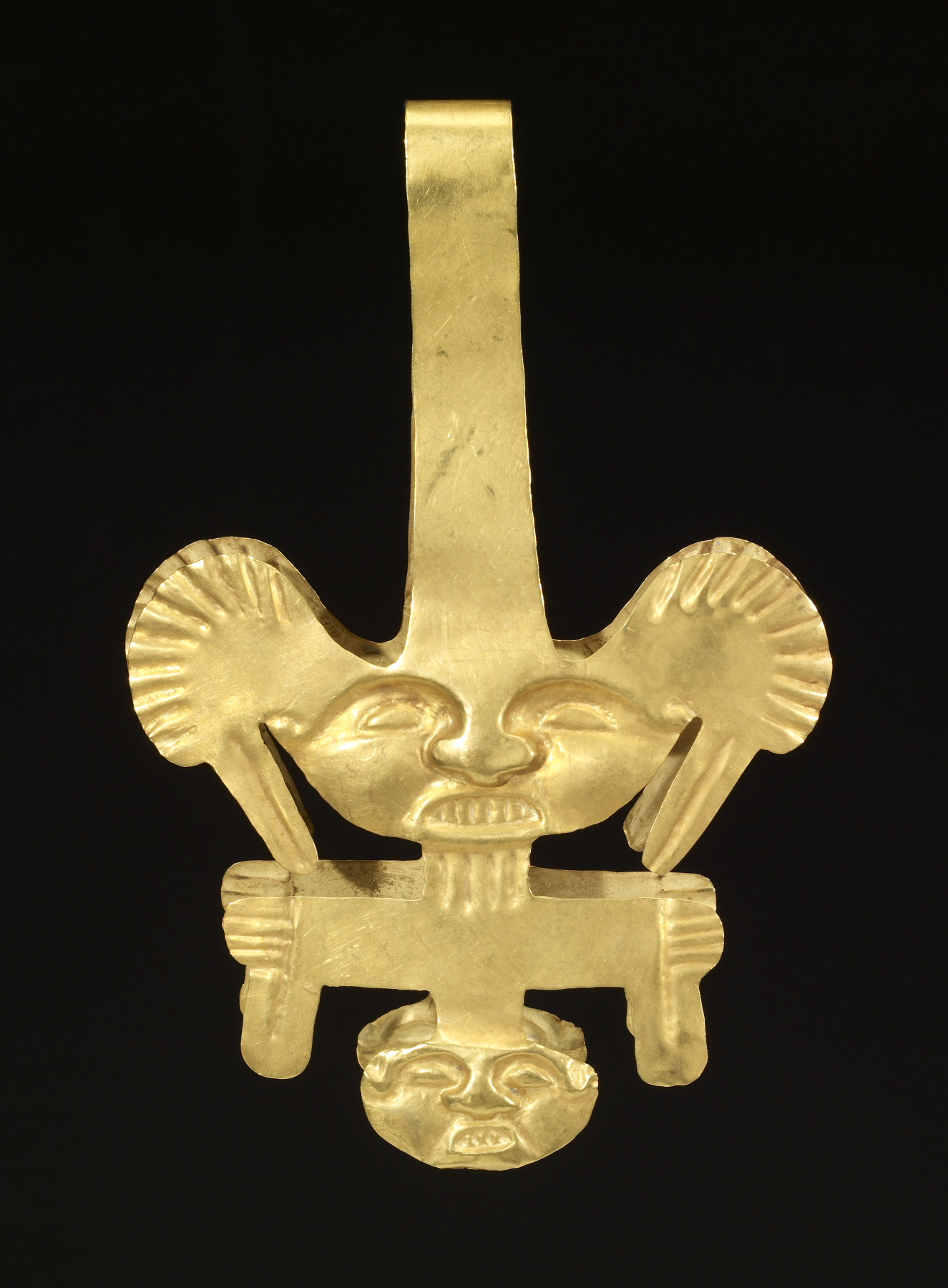Ceremonial Tweezers
(Ancient Americas )
Before undertaking a ritual to invoke the sacred, a holy person or ruler had to purify themself, inside and out. He or she might purge himself with laxatives, take saunas and ritual baths, and in some cultures, would remove hair from their faces or bodies. In Colombia, the contemporary Kogi people (who trace their ancestry to ancient peoples such as the Calima) frequently tweeze off their eyebrows before rituals. This may symbolize rebirth, recalling the scanty brows of infants. This golden object was likely both a decorative ornament and a functional tweezer, although probably it was used only in ritual performances.
Provenance
Provenance (from the French provenir, 'to come from/forth') is the chronology of the ownership, custody, or location of a historical object. Learn more about provenance at the Walters.
Tiffany & Co., New York; Henry Walters, Baltimore, 1910, by purchase; Walters Art Museum, 1931, by bequest.
Exhibitions
| 2018-2019 | Transformation: Art of the Ancient Americas. The Walters Art Museum, Baltimore. |
| 2015 | Gold of the Ancient Americas. The Walters Art Museum, Baltimore. |
| 1995-1996 | Going for Baroque. The Walters Art Gallery, Baltimore. |
| 1984 | The Taste of Maryland: Art Collecting in Maryland 1800-1934. The Walters Art Gallery, Baltimore. |
Geographies
Colombia (Place of Origin)
Measurements
H: 7 1/4 × W: 4 13/16 × D: 9/16 in. (18.4 × 12.3 × 1.4 cm)
Credit Line
Acquired by Henry Walters, 1910
Location in Museum
Charles Street: Second Floor: Latin American Art / Arte Latinoamericano
Accession Number
In libraries, galleries, museums, and archives, an accession number is a unique identifier assigned to each object in the collection.
In libraries, galleries, museums, and archives, an accession number is a unique identifier assigned to each object in the collection.
57.262


